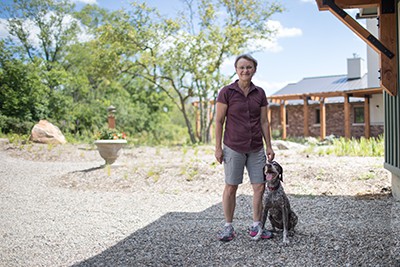
Marti and Tom Burbeck, Ann Arbor
Marti and Tom Burbeck created a beautiful home that will not only stand the test of time, but also gives back more to the environment than it takes. How? By using an array of strategies and state-of-the-art equipment to reach their net-zero energy goals. To start, the Burbecks installed a tight and well-insulated envelope and properly sized overhangs to minimize heating and cooling needs. Then, they integrated an energy recovery ventilator into their air systems, installed an air-source-to-water heat pump system, and are powering that pump with a 60-panel, 16-kilowatt photovoltaic array. Because of these and other enhancements, the Burbecks expect to save more than 370,000 kilowatt hours over the next 25 years.
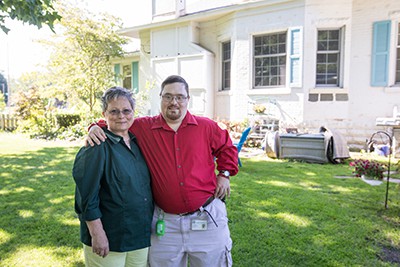
Sandra Keirnan, Holland
Sandra Keirnan had already begun renovating her vintage home when she heard about Holland’s Community Energy Plan. From that point on, Sandra was all in on energy efficiency, making good use of the many programs available, including on-bill financing and rebates through the Holland Energy Fund and SEMCO Energy. Sandra also competed in the Holland Energy Prize: Biggest Loser Challenge, taking second place and doubling her U.S. Department of Energy Home Energy Score from four out of ten to eight out of ten. Her renovations included everything from replacing inefficient appliances to improving the home’s insulation and windows. Because of this work, Sandra expects to save 802 kilowatt hours of electricity and 417 therms of natural gas annually.
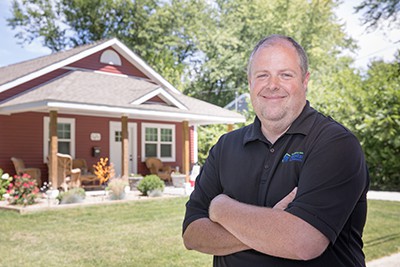
WINNER-Tom Tishler, Kalamazoo
Part of Habitat for Humanity’s mission is building high-performance homes with a focus on lowering the cost of ownership for the families who live in them. Tom Tishler, however, raised the bar when he constructed a high-performance Habitat for Humanity home in Kalamazoo, where yearly energy costs are expected to be less than $800, saving more than $20,000 over the lifetime of the mortgage. Tishler accomplished this, in part, by installing high-efficiency appliances, a state-of-the-art HVAC system, 100 percent LED lighting, high-quality insulation, and energy-efficient windows. The home will also protect the health of its occupants by employing moisture management and air quality measures that meet the highest industry standards.
BEST PROJECTS—PUBLIC
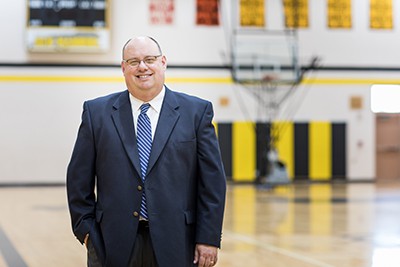
WINNER-Ewen-Trout Creek School District, Ewen
Ewen-Trout Creek School is one of Michigan’s most rural districts, serving 205 predominantly low-income students in the western Upper Peninsula. Like many schools, their building had begun to deteriorate; inconsistent heating had students wearing jackets inside, and a leaking roof damaged school supplies and students’ belongings. The administration, therefore, was forced to divert scarce funds from education toward fixing their infrastructure. In 2015, however, voters approved a $4.9 million bond referendum and the upgrades began. Ewen-Trout installed new high-efficiency boilers, water heaters, and fan coil units; added a new chiller; replaced the roof; and upgraded lighting fixtures. These improvements not only increased the comfort and function of the school, but also should save about 34,000 therms of natural gas and 33,500 kilowatt hours of electricity each year.
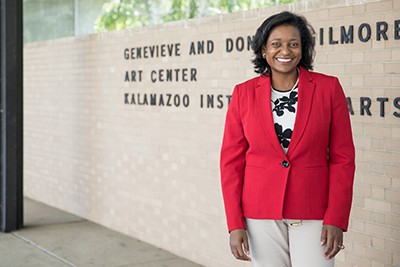
Kalamazoo Institute of Arts, Kalamazoo
Established in 1924, the Kalamazoo Institute of Arts promotes interest and education in various art forms among people in West Michigan. Recently, the institute decided to make energy-efficiency improvements in the hopes of lowering its energy costs and, consequently, its dependence on donations and endowments. Its goals were to decrease energy consumption, enhance the presentation of the art, ensure building integrity, and allow for better building system controls. To accomplish those goals, the institute installed LED lighting, sealed windows and doors, installed new insulation, and developed new operating schedules and thresholds to optimize heating and cooling. These modifications are expected to reduce energy costs by 25 percent annually.
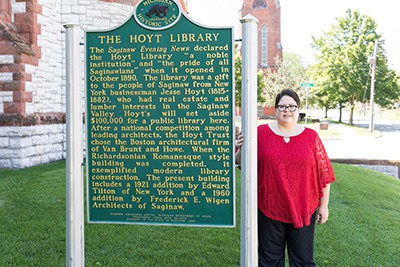
Public Libraries of Saginaw, Saginaw
Older buildings are notorious energy hogs, and the 126-year-old Hoyt Library was no exception. The aging building was costly to operate and subject to inconsistent temperatures. Furthermore, unchecked humidity was creating serious mold problems. A Consumers Energy audit helped the library identify the most critical issues, and a $122,000 grant from Consumers Energy’s Historic Buildings Initiative allowed the library to begin addressing them. The library invested in a high-efficiency boiler, a more efficient chiller, automation controls for the HVAC system, and a new and improved air quality system. These improvements are not only expected to save 3,400 therms of natural gas each year, but will also vastly improve the library’s environment for staff, patrons, and its impressive book collection.
BEST PROJECTS—AGRICULTURE
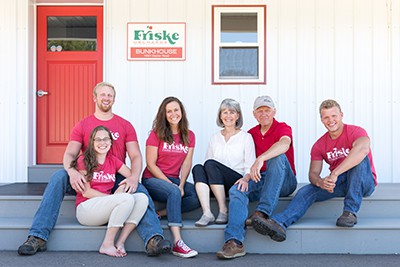
WINNER-Friske Orchards, Charlevoix
Friske Orchards is known for its fresh apple cider and the wide array of fruits and vegetables grown on the Charlevoix property. Like many agricultural operations, the orchard relies on seasonal workers during the busy months, many of whom live onsite. When Richard Friske noticed that the workers’ mobile homes needed considerable work, rather than repairing them, he decided to build entirely new bunkhouses—a decision that not only vastly improved living conditions, but also resulted in significant energy savings. The new, all-electric housing units have ENERGY STAR-certified appliances and lighting, new air-source heat pumps and insulation, and get most of their power from solar panels. Because of these improvements, Friske expects to save about 44,000 kilowatt hours of electricity per year.
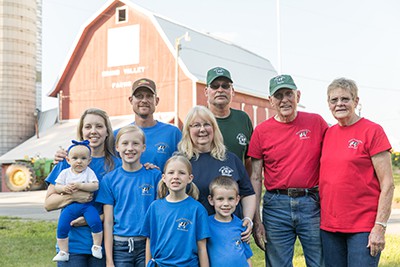
Grand Valley Farms, Rives Junction
You don’t stay in business for more than 60 years without embracing change, and Grand Valley Farms continues to do just that. This seventh-generation dairy farm recently overhauled its entire operation, with a special focus on decreasing energy waste. They replaced an inefficient and labor-intensive irrigation application with a center-pivot system, switched to a solar-thermal water heating system, and installed more energy-efficient products to heat and cool their milk. In addition, Grand Valley Farms installed energy-efficient lighting to improve visibility, comfort, and productivity on the farm. Together, these upgrades should save nearly 287,000 kilowatt hours of electricity each year.
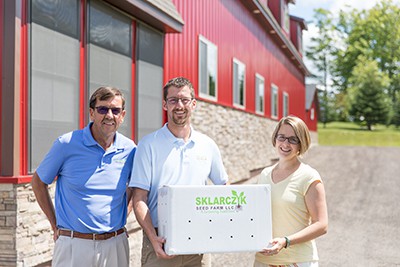
Sklarczyk Seed Farm, Johannesburg
Since the late 1980s, Don Sklarczyk has been a pioneer in the world of seed potatoes (that is, a piece or part of a potato from which new potatoes are grown). His use of tissue cultures to develop seed potatoes not only reduced seed-borne bacteria and viruses, but was so effective that it has since become the industry standard. Rather than dwell on this accomplishment, however, Don continued to look towards the next innovation. He recently found it when he installed 90 LED grow lights in his greenhouse, enabling him to significantly increase seed production while saving more than 200,000 kilowatt hours of electricity each year. Those who know Don are excited to see what he’ll come up with next.
BEST PROJECTS – INDUSTRIAL/MANUFACTURING
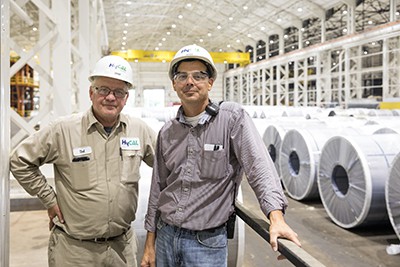
WINNER-HyCAL Corporation, Gibraltar
HyCAL Corporation makes high-strength steel for light automotive manufacturing. Recently, the company chose to locate a facility on a brownfield site in Gibraltar, Michigan because of its proximity to auto industry giants. However, rather than construct a new building, HyCAL chose to renovate the 60-year-old community eyesore already on the site. Over two years, the organization installed nearly 650,000 square feet of wall and ceiling insulation. They also implemented a process to capture and use waste heat that was previously vented outside. In fact, last winter, this change worked so well that HyCAL didn’t need to use its new rotation furnaces at all. HyCAL also installed 679 new LED lights, which improved the space in terms of visibility, safety, and comfort. These upgrades are expected to translate into a savings of about 108,000 thousand cubic feet of natural gas and 4,900,000 kilowatt hours of electricity each year.
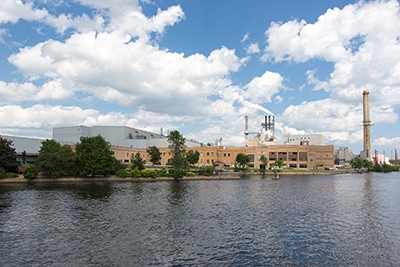
Verso Paper Company, Escanaba
Verso Paper Company is a cornerstone of Escanaba, the third largest city in Michigan’s Upper Peninsula. In operation since 1911, the mill produces 750,000 tons of paper a year and directly employs 900 people. Last year, the company took an impressive step toward reducing energy waste and lowering production costs when it installed larger pipes and valves. This size increase accomplished two things: It improved the flow rate of recycled water, which decreased demand for fresh water, and because the recycled water is already heated, it lowered the facility’s overall water heating needs. While these changes may seem modest to the average observer, they are expected to save 45,000 cubic feet in natural gas each year.
BEST PROJECTS—COMMERCIAL (PRIVATE)

First Housing Corporation, Lansing
First Housing Corporation (FHC) provides senior citizens with high-quality, affordable housing; however, their 20-year-old mechanical systems had become inefficient and susceptible to outages. Rather than switching to electric implements, as some contractors had suggested, FHC instead recommitted to natural gas to improve energy efficiency; reduce emissions; and allow for lower, more stable utility pricing. They installed 18 high-efficiency, natural gas-fired heat pumps and four natural gas heat recovery chillers, which enabled them to reduce nitrous oxide emissions by 90 percent and decrease annual production of carbon dioxide by 40 percent. In addition to protecting the health of their residents, these changes should save the company 31 percent on natural gas and 52 percent on electricity annually.
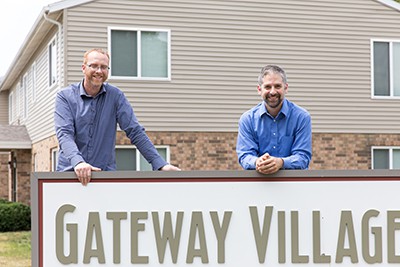
WINNER-Gateway Village, Sturgis
Since its construction in the 1970s, Gateway Village has provided quality housing options for individuals with moderate to extremely low incomes. However, the 100-unit community in Sturgis was getting old and expensive to operate. When Hollander Development Corporation acquired it, they decided it was time for an overhaul, with a goal of reducing energy expenses by 13 percent annually. To reach that goal, all 12 buildings on the property were fitted with new attic insulation, energy-efficient windows and exterior doors, ENERGY STAR appliances, LED lighting, and low-flow plumbing fixtures. These upgrades should save about 10,900 therms of natural gas and 90,000 kilowatt hours of electricity per year. Even better, they will greatly improve comfort and safety for residents.
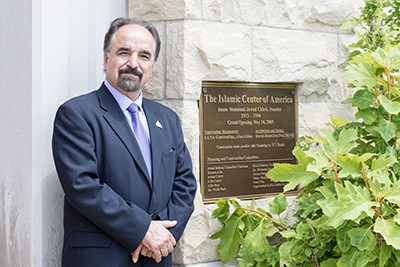
Islamic Center of America, Dearborn
Located in Dearborn, the Islamic Center of America serves over 10,000 families in all areas—spiritual, social, and educational. In 2016, the organization set out to serve the environment as well by reducing its carbon footprint. First, the center hired an EPA portfolio manager to measure and track energy consumption. Then, it swapped out its old lights for new LEDs, installed high-efficiency thermostats that operate based on building usage, made water efficiency improvements to its bathrooms and sprinkler system, and developed a preventative maintenance schedule for its HVAC units. Together, these improvements are expected to save about 12 percent in natural gas and 30 percent in electricity each year, and reduce annual energy costs by $18,000.
CONTRACTOR OF THE YEAR
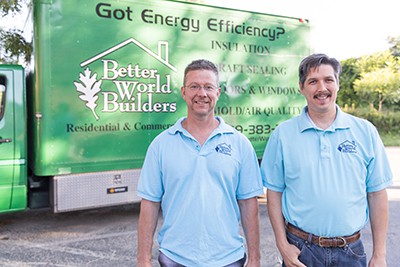
WINNER-Better World Builders, LLC, Kalamazoo
Mark Lee dreams of Kalamazoo becoming the most sustainable community in Michigan, and he’s hard at work turning that dream into reality. As owner of Better World Builders, Mark works on both residential and commercial properties, making them more comfortable, durable, safe, and efficient. He starts by performing an energy audit or insulation evaluation to pinpoint where money is being wasted and comfort is lost. Then, he develops a comprehensive plan for turning things around. His customers speak highly of Mark’s work, praising him not only for raising the value of their properties, improving their health, and providing excellent customer service, but also for reducing their carbon footprint. In 2016, Better World Builders submitted 50 projects to the Consumers Energy Home Performance Program, which will save their customers more than 13,000 therms of natural gas and 27,000 kilowatt hours of electricity annually.
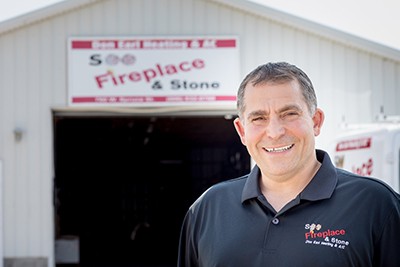
Don Earl Heating & A/C, Sault Ste. Marie
Don Earl, owner of Don Earl Heating & A/C, is a strong advocate for energy efficiency. From his storefront in Sault St. Marie, he helps customers better understand the many ways they can make energy improvements in order to stay safe and warm through the Upper Peninsula’s frigid winters and save money in the process. For example, Don often suggests replacement versus repair as a way to improve customers’ health, safety, and efficiency. Don goes the extra mile by helping those same customers apply for incentives, such as those offered through the Cloverland Electric Cooperative Energy Optimization program. Due, in large part, to Don’s assistance, his customers have saved 15,900 therms of natural gas and 42,800 kilowatt hours of electricity.
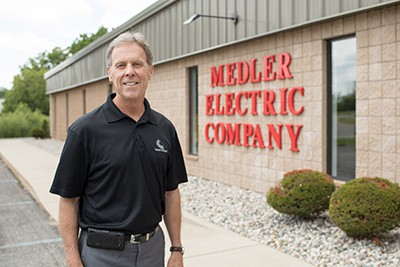
Medler Electric, Alma
Recognizing the importance of helping customers reduce their energy footprint, Medler Electric starts by hiring skilled employees and training them on energy-saving best practices. Their goal is to ensure that staff members are ready, willing, and able to assist every customer who walks through their doors with solving their energy challenges. These efforts have clearly paid off. Consumers Energy has rated Medler Electric the number one contractor for two out of the past three years, and DTE Energy’s Commercial Lighting Instant Discount Program ranked them first for rebate referrals. Medler Electric has submitted more than 200 incentive applications on behalf of its customers and enabled them to save more than 8,000,000 kilowatt hours of electricity.
INNOVATOR OF THE YEAR
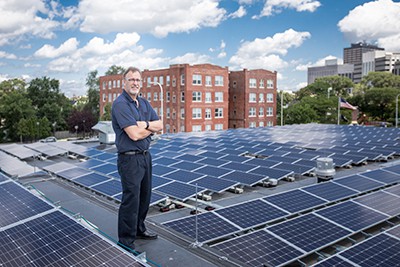
Walt Dindoffer, Temperance
Not all innovators create products; some of them develop processes that revolutionize an entire field. That is the case with Walt Dindoffer of Development Solutions. With a thorough understanding of how processes work and how to leverage incentive programs to maximize savings and efficiency, Walt has helped numerous industrial manufacturing clients exceed their energy savings goals. His dedication to reducing energy waste, improving environmental sustainability, and taking full advantage of continuous process improvement have made Dindoffer stand out in his field. Because of his skill as a teacher and motivator, Walt’s clients have been able to reduce operating costs, increase production, and decrease energy consumption by nearly 2,500,000 therms of natural gas each year.
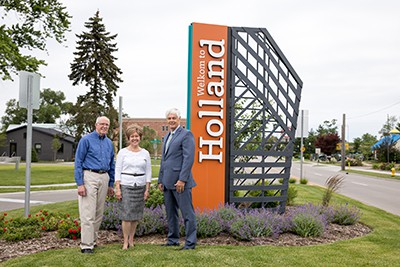
WINNER-Holland Energy Fund, Holland
The Holland Energy Fund is a bold initiative supported by the City of Holland, the Holland Board of Public Works, community members, and Michigan Saves that strives to make Holland, Michigan a world-class leader in energy security, affordability, sustainability, and efficiency. To reach its goal, the fund offers low fixed-interest loans with simple qualifying criteria that residents can conveniently pay back through their electric bill (known as on-bill financing). Using dollars from the fund, as well as rebates from the Holland Board of Public Works and SEMCO Energy, homeowners can make a wide range of deep energy-saving upgrades—from installing new windows and insulation, replacing appliances, and updating lighting to replacing wasteful furnaces, air conditioners, and water heaters.

Carla Walker-Miller, Detroit
Carla Walker-Miller fills a unique energy niche—she is both a contractor who helps people increase the efficiency of their homes and an advocate who raises awareness about the energy burdens suffered by marginalized families. For example, wearing her contractor hat, Walker-Miller worked in 2016 on behalf of the DTE Home Energy Consultation program, going into 100 homes, installing a variety of energy-saving measures, and prequalifying participants for the repair or replacement of major appliances. As an advocate, she also helped persuade residents of the value of installing a solar array in an inner-city neighborhood, making it the most energy-efficient residential area in the entire state. In addition, she helped several local residents obtain well-paying jobs in the energy industry. The range of these projects demonstrates why many have come to think of Walker-Miller as Michigan’s leading energy Jill-of-all-trades.
BEST COMMUNICATION/EDUCATION PROGRAM

WINNER-Consumers Energy, Okemos
Through their Nonprofit Energy Efficiency (NEE) program, Consumers Energy is helping those in our communities who help others—nonprofits, houses of worship, and local community organizations that operate out of historic buildings. When these groups don’t have the funding or manpower necessary to tackle energy problems, Consumers steps in, designing and implementing efficiency plans and providing materials and labor at minimal to no cost. In 2016, the NEE program assisted 559 organizations with investments totaling $1,790,000. Those investments, in turn, will help the organizations save more than $730,000 per year. Since the start of the program in 2013, Consumers has helped more than 1,330 organizations save about $1,500,000 million per year in energy costs.
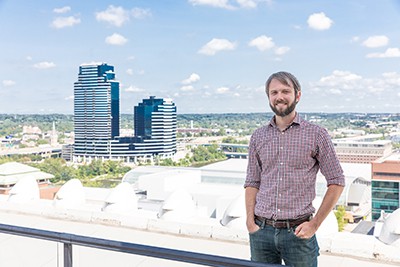
GreenHome Institute, Grand Rapids
The GreenHome Institute champions a successful program called the Biggest Loser: Home Energy Reduction Challenge. The year-long initiative encouraged Holland residents to reduce their electric, gas, and water usage in 2016 over the previous year. To increase participation, residents were offered cash prizes, with a $500 check going to the biggest overall “loser.” The program urged residents to engage with energy efficiency at whatever level fit their lifestyle and budget—some instituted small changes like turning their heat down and turning off lights, whereas others undertook bigger projects, like insulating and air sealing their basements and attics. In 2016, the program helped save about 14,000 therms of natural gas.
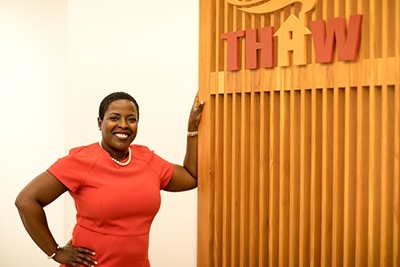
The Heat and Warmth Fund, Detroit
The Heat and Warmth (THAW) Fund provides utility assistance to Michigan families in need. Heat and electricity are necessities, not luxuries, and THAW is there to help people when they need it most. In 2016, the organization served families at or below 150 percent of the federal poverty level in 72 of Michigan’s 83 counties, providing $12 million in energy assistance to over 10,000 households. Recipients typically include the elderly, unemployed, underemployed, and the disabled who find themselves in an energy crisis. Charity Navigator has awarded THAW four out of four stars for three consecutive years, with more than 90 cents of every dollar raised going directly to programs that support vulnerable Michiganders.

